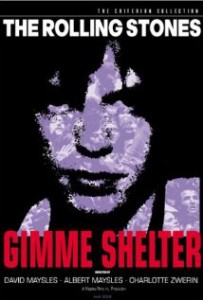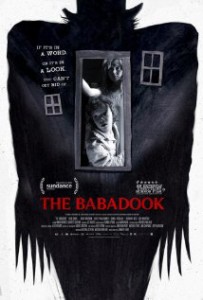What I Learned from Horror Movies This Year
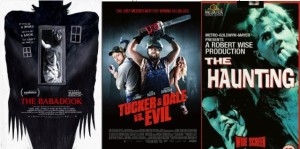 It’s no secret that I love horror movies.
It’s no secret that I love horror movies.
But as a Christian, I also think that a heavy, undisciplined rotation of such can be detrimental to one’s soul. One can simply read the comments on a regular user board to find those who wish “they can unsee” certain movies, that such nastiness would hang with them for a long time.
Therefore, I am extremely discerning as to what films to watch. Such films must be critically acclaimed, avoid exploitive scenes, and even have a good underlying message. I also limit my intake to just one month a year (October). It forces me to watch only those movies that have the best buzz about them, catching up on classics that I may not have seen before, and revisiting those horror films that can be considered family-friendly.
While I firmly believe that while the vast majority of horror movies are poorly made and exploitive, the very best of such films can provide insight and spiritual nourishment, provided that you know where to look.
The following list is what I have learned from my own Horror-Movie-A-Thon from this past month. After which, I will rank the films, in the order of worst-to-best. And thankfully, none of these I regret seeing due to content.
Some, reading this, will disagree with my central premise (whether for or against). Know that I honor this disagreement. I think all sides to this have some merit, and it’s not to everybody’s taste. We all have lines drawn (or should, anyway) as to what we can personally ingest. If this is not for you, feel free to stop reading now. I won’t complain.
Spoilers may follow.
I. CRAFTSMANSHIP
Excellence in craft–in any medium–is a mirror of God’s excellence in creativity. We are “fearfully and wonderfully made.” We cannot be merely the result of some accidental explosion that has morphed over billions of years. We–us personally, the whole human race, all the differences in species in land, sea and air, the perfect living inhabitants of a planet just the right lenghth from the sun–there is so much attention to detail it is staggering.
Note that as I admire the craft, I learn a little something about making art in general.
1. Authenticity Counts.
The scariest movie on my list was not a “traditional” horror movie, but it unnerved me unlike any other. Gimme Shelter (1970) was to be a celebration of the music of the Rolling Stones, as they performed a free concert (echoes of Woodstock), in Altamont, near San Francisco. Instead, the event was a fiasco that led to four fatalities, one of which was captured on film. (I guess hiring the Hell’s Angels as Security wasn’t a good idea).
What made the film excellent, was the fact that this really happened, and you are witnessing the circumstances that led to such right before you. You get the perspectives of the filmmakers, the fans, the promoters, and the famous rock musicians, as it careens into a slow-motion car-crash, with nobody anticipating something of this nature ever happening. The look on Mick Jagger’s face that closes the film carries a weight of a burden that no actor can dare imitate.
Oh yeah, the music’s fantastic, too.
As a corollary that proves my point, Deliver Us From Evil (2014) was marketed as a supernatural thriller based upon the true supernatural experiences of Ralph Sarchie, a Bronx detective. However, while he and Fr. Mendoza are real people, the story itself was entirely fabricated. The film would have been far better had they not tried for “gotcha” scares and laid down a “this-really-happened” vibe.
2. Creative Low-Budget Trumps Digital Effects.
From a creative’s perspective, a low budget approach to crafting scares sometimes trumps that of big-budget digital effects. My wife and I greatly admired Robert Wise’s The Haunting (1963) and part of that film’s enduring legacy is that there are no trick shots in the film. Contrast that with the dreaded 1999 remake, with a stellar cast and an esteemed director, but also digital effects that neutered any scares that were to be had.
Modern films have learned this as well. It Follows (2014) has an illogical story, but I greatly admired much of their low-key approach of generating scares, oftentimes from just using long shots. These were far more effective than some of their up-close gore shots. Also, The Babadook (2014) gets points for its creative use of a pop-up book and… my favorite: replicating those silent films from the 1920s.
The winner of this category happens to be Cube (1997), a cult film I finally caught up with for the first time. 95% of this stellarly crafted (even if dramatically inert) thriller was shot in a single, well-designed room.
Corrolary 1: it can also be bad.
It’s no guarantee that a low-budget scare will work. Deliver Us From Evil (2014) had an odd-looking stuffed animal fall off the shelf by itself. Whoop-de-doo.
Corrolary 2: big budget creativity can be breathtaking!
The Nightmare Before Christmas (1993) introduces a dizzying world with endless innovation and creativity. Watching this again, noting all the craftsmanship, it’s simply spell-binding. (I was hoping that this would be the year to introduce The Nightmare Before Christmas (1993) to my 8-year olds. Sadly, they declined; perhaps next year).
II. GENUINE EMPATHY
“Love your neighbor as yourself.”(Mark 12:31) That Commandment invites you to consider another person’s plight as your own. Fiction has a remarkable ability to place you into an entirely different worldview, based on different eras, locations, and personal circumstances. Ever since James Whale had us sympathize with Dr. Frankenstein’s “Monster”, some stories are extremely effective at having us see life through another person’s eyes.
3. We Are Shaped By Our Past
The power of The Haunting (1963) rests almost entirely on the shoulders of Julie Harris. She carries the film with her brave performance, as a grown woman who had been sheltered most of her adult life, caring for her mother. Being invited to a haunted house gives her a thrill, that she has importance. The tragedy of The Haunting (1963) is that her whole story arc focuses upon her first-found freedom, and all the burdens she had carried, before she had a chance to truly live.
In a lesser extent, this was also seen in Tucker And Dale vs. Evil (2010), where one of the main characters, a college student scarred from his parents’ murder, discovers a terrible secret about their lives, and it influences his decisions with him knowing.
4. Widows And Orphans Carry A Terrible Burden.
Scripture dictates that the Gospel is to care for widows and orphans (James 1:27). No other movie so powerfully conveys this message than The Babadook (2014). In it, a widow and her young son are tormented by an otherworldly curse, a phantom who haunts them through mirages and such. The ending, where the mother and son learn to live with this, raises the movie to a level of allegory, that the curse they are against is the darkness that surrounds the empty void of lack of a father. They could never be rid of its tauntings.
III. TRADITIONAL MORALITY
Horror movies oftentimes are visceral reminders of the repercussions of one’s immoral actions. Whether it be the foolhardiness of playing God (Frankenstein), to become a drug addict (Requiem For A Dream) or to give up one’s virginity foolhardedly (countless teen slasher films, parodied in Scream), where horror movies excel is detailing a what-if scenario where one’s moral lapses lead. This year’s crop does not disappoint. Case in point:
5. Don’t Judge Others Based On External Appearances
Tucker and Dale (from Tucker And Dale vs. Evil (2010)) are two best friends who are spending a quiet weekend in a newly purchased fixer-upper cabin. Unfortunately for them, due to a series of unfortunate circumstances, they are immediately pegged as evil hillbillies by a group of vacationing college students, in the realm of “The Texas Chainsaw Massacre” and “The Last House on the Left.” Nearly every death in the film was preventable and accidental, at root because of the false general assumption that they conveyed.
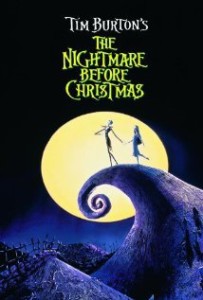
6. Eschew Envy
The characters in Cube (1997) are different people who find themselves in some otherworldly contraption, and they need to work together to find a way out. Some of the rooms are booby-trapped. But some of the deaths occur because of jealousy and infighting within the group. The story stands as a bold morality tale.
Also, The Nightmare Before Christmas (1993) is about a resident of Halloweenville, (Jack Skellington, the Pumpkin King), who becomes envious of Santa Claus. When he finally has an avenue to switch sides, the results are disastrous.
7. Sex Outside Of Marriage Is Dangerous
One of the most standard horror movie tropes is that premarital relations are a harbinger of gruesome deaths. It Follows (2014) marked a return to this formula. A young woman’s initial sexual encounter leads to a series of deaths, which she can avoid herself as long as she continues to “pass it on.”
The movie works as an analogy for AIDS/STDs, although it also appends to that a nihilistic disregard for the people she infects afterwards. This gives it a leg up on horror movies where a mere boogieman is out to get people; the horror it typifies, while supernatural, represents something far more close to home.
8. Mass Movements Can Be Dangerous
Back to Gimme Shelter (1970). What began as a gift to the residents of San Francisco, a free concert, turned into a living nightmare. And you see it in Mick Jagger’s horrified eyes, as the trouble that ensued was one of his making. You see it in his constant exhortations to the crowd to “calm down.” The murder that ensued was simply the nadir of the events that led up to that moment. Even The Grateful Dead wouldn’t get on that stage.
In a more family-friendly example of this, Shrek’s Thriller Night (2011) (which my kids currently enjoy—they can’t handle Michael Jackson’s “Thriller” just yet), Shrek is exasperated when all of his friends start turning into zombies. And the most horrible thing to come out of this… is synchronized DANCING. To be swept into the dance sequence because everybody else is, that’s terrifying.
IV. THE IMPORTANCE OF FAITH
More often than not, a great horror film represents the struggle of belief, in the minds of its creators. They know that dealing with the supernatural, in the context of these stories, and evil in general, takes a central protagonist who struggles with the existence of such to begin with.
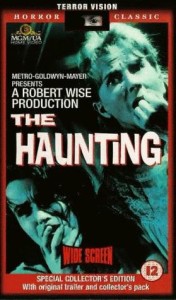
9. Most Horror Is A Testament Towards Faith
Although Deliver Us From Evil (2014) didn’t work for me as a horror film, as a conversation about faith, it excels. Scott Derricksen, who wrote and directed, is a devout Christian, and he infused this film with sharp writing about the nature of faith, especially in the barbed interviews between its two leads.
To a lesser extent, some horror characters represent the lack of one’s faith in anything supernatural. The Haunting (1963) has fun with this. A professor wishes to conduct an experiment having individuals spend the night in a supposedly “haunted” house. Half-way through, a fourth character appears, with the most bitter skepticism on such. What happens to that characterr, the terror she experiences—is it imaginary, or is it real? The fact that the movie pulls it off without cheating, makes it a landmark in horror cinema.
An exception to this is It’s the Great Pumpkin Charlie Brown (1966). But being that it is well known that Charles Schultz was a man of faith, it is obvious that he was more concerned about the dangers of false faith, or faith being established without any credible thought. Linus’ blind devotion to the legacy of “The Great Pumpkin” (along with Sally’s devotion to Linus) serves as a reminder that we cannot allow our faith to be divorced from our minds. Not that we must have everything about God spelled out—many concepts (i.e. the Trinity) are too deep for our minds to accept. But ours is an intellectual faith, built upon the testimonies of those before us, and confirmed by giants such as Aquinas, Augustine and the doctors of the faith.
10. Horror Can Be Fun
The loudest laughs you would’ve heard from me this year was in watching Tucker And Dale vs. Evil (2010). Even I am surprised at the level of mirth that my laughter conveyed, even noting that this was oftentimes the result of a tragic, perhaps gory, death. And yet because of the goodwill and camaraderie between the three leads (Alan Tudyk, Katrina Bowden and especially Tyler Labine), and its generosity of heart in many scenes, I was not bothered by the scenes of terror. This was a fun movie, well worthy of multiple viewings.
But even the family-friendly movies helped distill this point: Horror movies can be fun. Mr. Pricklepants in Toy Story of Terror (2013) helping ease a child in understanding the genre’s conventional tropes, to Shrek’s desire to see a horror film instead of The Sound of Music.
For myself, introducing my children to Abbott and Costello Meets Frankenstein (1948) was a highlight.
MOVIE RANKINGS (WORST-to-BEST)
15. Frankenweenie (1984) – This short opened doors for Tim Burton back in 1984. It’s of its time.
14. The Creature from the Black Lagoon (1954) – I finally saw this classic 3D movie, and came away slightly disappointed. But I loved the suit.
13. Cube (1997) – this movie gets bonus points for being thoroughly original and getting a lot of mileage out of its limited budget. But knowing this kept me from being swept up into the story.
12. Deliver Us From Evil (2014) – I wished I liked this more. The scares didn’t work for me; but the setting and some of the dialogue did. It makes me very curious as to those actual expriences GETNAME had.
11. It’s the Great Pumpkin Charlie Brown (1966) – it’s a classic; I know. My kids love it. I know. I’ve also seen it way too many times.
10. Toy Story of Terror (2013) – It starts out as both age-appropriately scary for young children and as an education of the genre; it ends up as an action film.
9. Shrek’s Thriller Night (2011) (short) – Introduced this to the kids, once I sensed they still are too young to watch Michael Jackson’s version. The only thing marring this is Eddie Murphy imitator’s lousy singing voice.
8. It Follows (2014) – Some great eerie scenes. I wish I liked it more. The illogic of the premise simply caught up to me.
7. The Nightmare Before Christmas (1993) – First time I’ve seen this since it came out. Two of the songs are great, the rest are meh. But the animation is top-notch, creative, dizzying and fun.
6. The Invisible Man (1933) – Claude Rains evolved as one of Hollywood’s great supporting players. But this was his movie debut… and he’s invisible throughout most of the film! All you heard was his most-effective voice, and his occasional cackle. Great entertainment!
5. Abbott and Costello Meets Frankenstein (1948) – This is widely considered to be Abbott and Costello’s crowning achievement. It’s a great family film, a way to introduce the Halloween characters in one movie (other than that Adam Sandler cartoon out now).
4. The Haunting (1963) – The first time I saw this, a few years ago, I was a little disappointed. Since then we upgraded our television to letterbox, and that made all the difference. Every shot is lovingly composed for widescreen, and it’s far more effective because of it. By the way, it’s rated “G”, but I would say older kids should watch this.
3. Tucker And Dale vs. Evil (2010) – Finally caught up with this, after being recommend to catch it from many others. Uproarious. Guffaw-inducing. And with a tremendous heart. Even if you’re queasy around graphic violence, give this a try.
2. The Babadook (2014) – this is the most empathetic horror movie since The Orphanage. You root for the mother and her son. You care for their plight. And as you care for them (and are seriously freaked out by the goings on), you begin thinking of those in your own circles who are also fatherless.
1. Gimme Shelter (1970) – Most will balk at including this film—a concert documentary [!!!]—at the top of this list. And yet, after the excellent music, and a vivid portrait of the members of the Rolling Stones at their most emotionally fragile, the closing scenes will horrify you like no other movie can. We get to share in their pain.
What are your favorite horror movies? What are your favorite lessons from such? Please share below.









